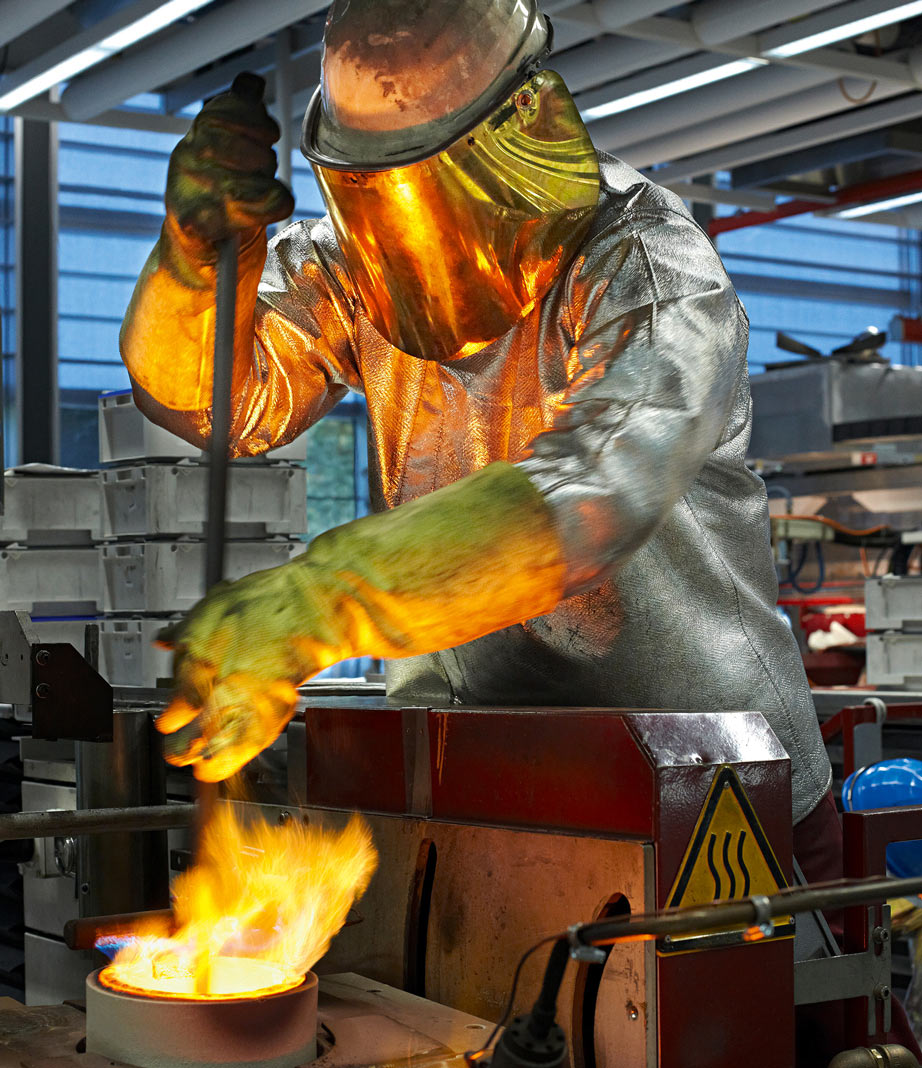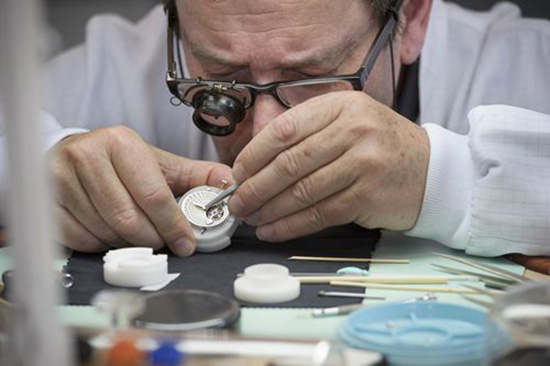Why Are Luxury Watches So Expensive?
A common question among newer watch collectors is, “Why are luxury watches so expensive?” In our modern world of “Fast Fashion,” we can lose sight of why some goods have such jaw-dropping prices associated with them—and balk at who is nutty (or lucky) enough to spend that much on a watch!
Here we break down the three core factors that influence (and ultimately inflate) the cost of a luxury watch.
Luxury watches are made with the finest materials.
From the diamond-covered bezel to the gold watch case to the mother-of-peal dial, watch makers use premier quality materials (both inside and out) to build their luxury watches. In turn, these precious materials are a direct line to a higher price tag. While less-expensive materials could be used (like stainless steel or gold-plated metals), using these fine materials improves the longevity of the piece.

A foundryman alloying gold at Rolex’s foundry.
The materials used to build a watch also become a significant point of distinction for some brands. To wit, Rolex is the sole watch brand to make its own gold; the Swiss watchmaker has gone so far as to run their own gold foundry in order to be the exclusive manufacturer of the gold used for their watch cases and bracelets. They even developed and patented their own shade of rose gold, Everose.
It can take years of research and development to design a watch or watch movement.
Watchmaking is a surprisingly high-stakes game. Given the long history of watches, it can be very difficult for a brand to innovate upon centuries-old technology and watchmakers will constantly challenge themselves to build a watch that is thinner, has more complications, or is even more accurate than its predecessors. It’s a fascinating balance of carrying on and building upon the longstanding tradition of watches.
Brands will invest a significant amount of time and resources to design, test, and perfect their watches before they make their big public debut. (For one example, A. Lange & Sohne spends between three to five years to design a new watch or caliber.) With all that said, designing a new watch or movement takes a very long time and, as the adage goes, time is money which is ultimately reflected in watch’s final price tag.
Luxury watches are usually only available in very limited quantities.
Luxury items—be they watches, handbags, or sports cars—are by definition rare. They’re expensive to produce and their exclusivity heightens their desirability to the elite shopper who can actually afford them. That said, watches aren’t necessarily produced in limited qualities to give the illusion of their rarity.
Many luxury watches are hand-finished so scaling production is simply not an option. (One such brand is Bovet that produces only 2,000 watches a year and it is estimated that in its 180-year history, Patek Philippe has produced less than a million watches.) Moreover, in order to maintain their internal precision and exacting specifications, brands want to have tight control over their manufacturing process which is easier done in smaller quantities. Therefore, these small-run watches earn a higher retail value.

A watchmaker carefully assembling a Girard Perregaux luxury watch (Image courtesy of Girard Perregaux)
Ultimately, all these factors come together to account for the premium value put upon luxury and fine watches and explain why a certain watch is more than another.
One of the most expensive watch brands on the market is Patek Philippe. To learn more about what factors into a Patek Philippe price tag, read our blog post on the topic here!







